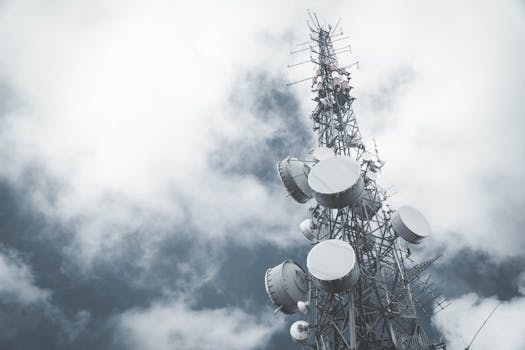Breaking Barriers: How Recent Developments are Transforming Satellite Communication

Breaking Barriers: How Recent Developments are Transforming Satellite Communication
Satellite communication has been a vital part of the telecommunications industry for decades, providing connectivity to remote and underserved areas. However, the industry has faced several challenges, including high costs, limited bandwidth, and latency issues. Recent developments in Satellite Communication are breaking barriers and transforming the industry. With advancements in technology, satellite communication is becoming more accessible, efficient, and cost-effective.
One of the significant advancements in satellite communication is the development of low-Earth orbit (LEO) satellites. LEO satellites are designed to operate in lower orbits, typically between 160 and 2,000 kilometers above the Earth’s surface. This lower orbit reduces latency and increases bandwidth, making it ideal for real-time communication applications such as video conferencing and online gaming. Companies like SpaceX, OneWeb, and Amazon’s Kuiper Systems are launching constellations of LEO satellites to provide global internet coverage.
Advancements in Technology
Advances in technology have played a crucial role in transforming the satellite communication industry. The development of phased arrays, digital signal processing, and advanced propulsion systems has improved the performance and efficiency of satellites. Phased arrays allow for more precise beamforming, increasing the signal strength and reducing interference. Digital signal processing enables satellites to process and transmit large amounts of data, making them more versatile and efficient. Advanced propulsion systems, such as electric propulsion, have increased the lifespan of satellites and reduced the cost of launching and maintaining them.
The use of artificial intelligence (AI) and machine learning (ML) is also becoming more prevalent in the satellite communication industry. AI and ML can be used to optimize satellite operations, predict and prevent errors, and improve the overall efficiency of the network. For example, AI can be used to analyze data from satellites and predict when maintenance is required, reducing downtime and increasing the overall reliability of the network.
Increased Accessibility and Affordability
Recent developments in satellite communication have made it more accessible and affordable for individuals and organizations. The cost of launching and maintaining satellites has decreased significantly, making it possible for smaller companies and organizations to enter the market. The development of smaller satellites, such as CubeSats, has also reduced the cost of launching and operating satellites.
The increased accessibility and affordability of satellite communication have opened up new opportunities for applications such as remote sensing, Earth observation, and communication services. Satellite communication can provide connectivity to remote and underserved areas, enabling access to essential services such as healthcare, education, and financial services.
Conclusion
In conclusion, recent developments in satellite communication are breaking barriers and transforming the industry. With advancements in technology, satellite communication is becoming more accessible, efficient, and cost-effective. The development of LEO satellites, advancements in technology, and increased accessibility and affordability are just a few examples of the many developments that are transforming the industry. As the demand for satellite communication continues to grow, it is likely that we will see even more innovative solutions and applications in the future.





